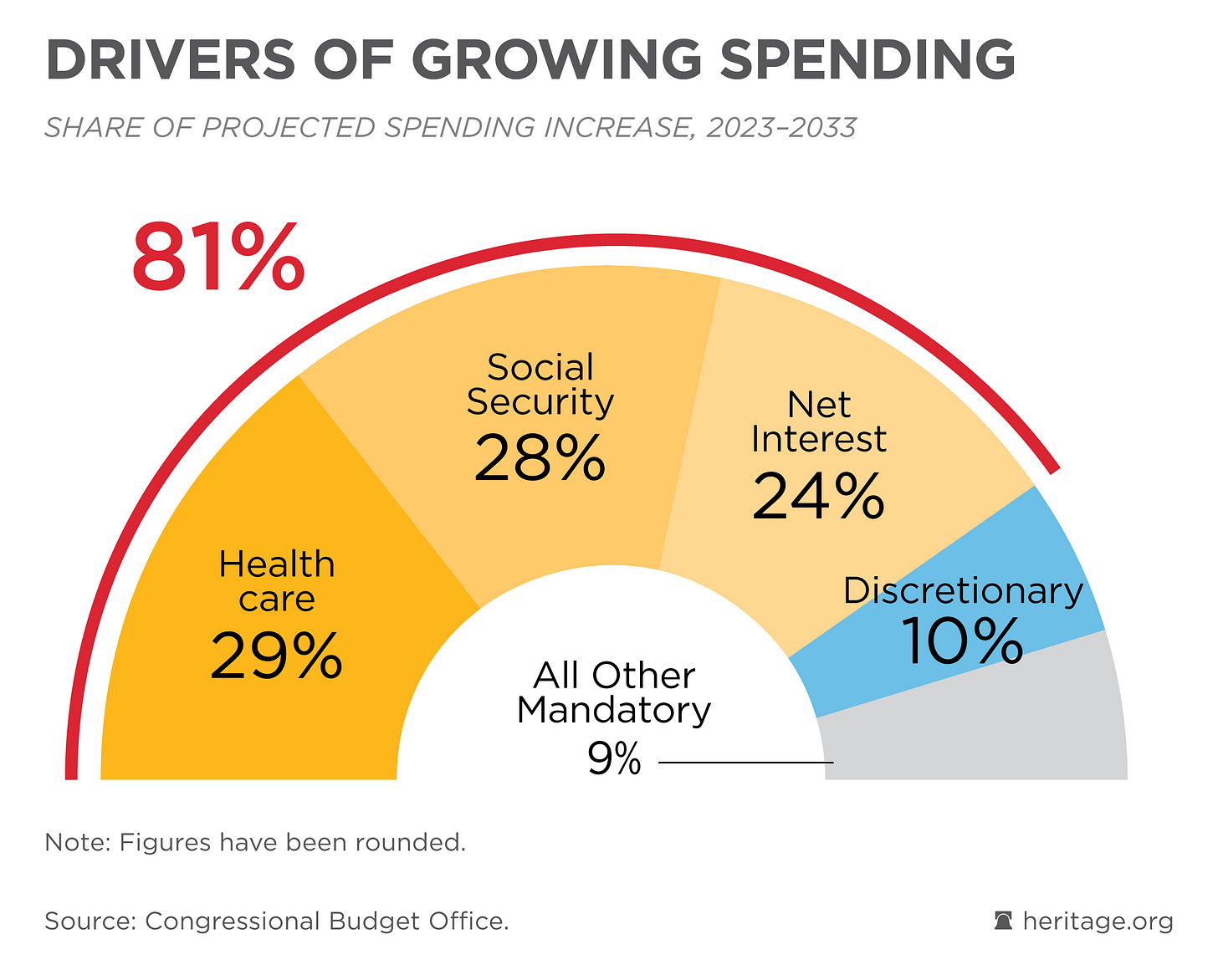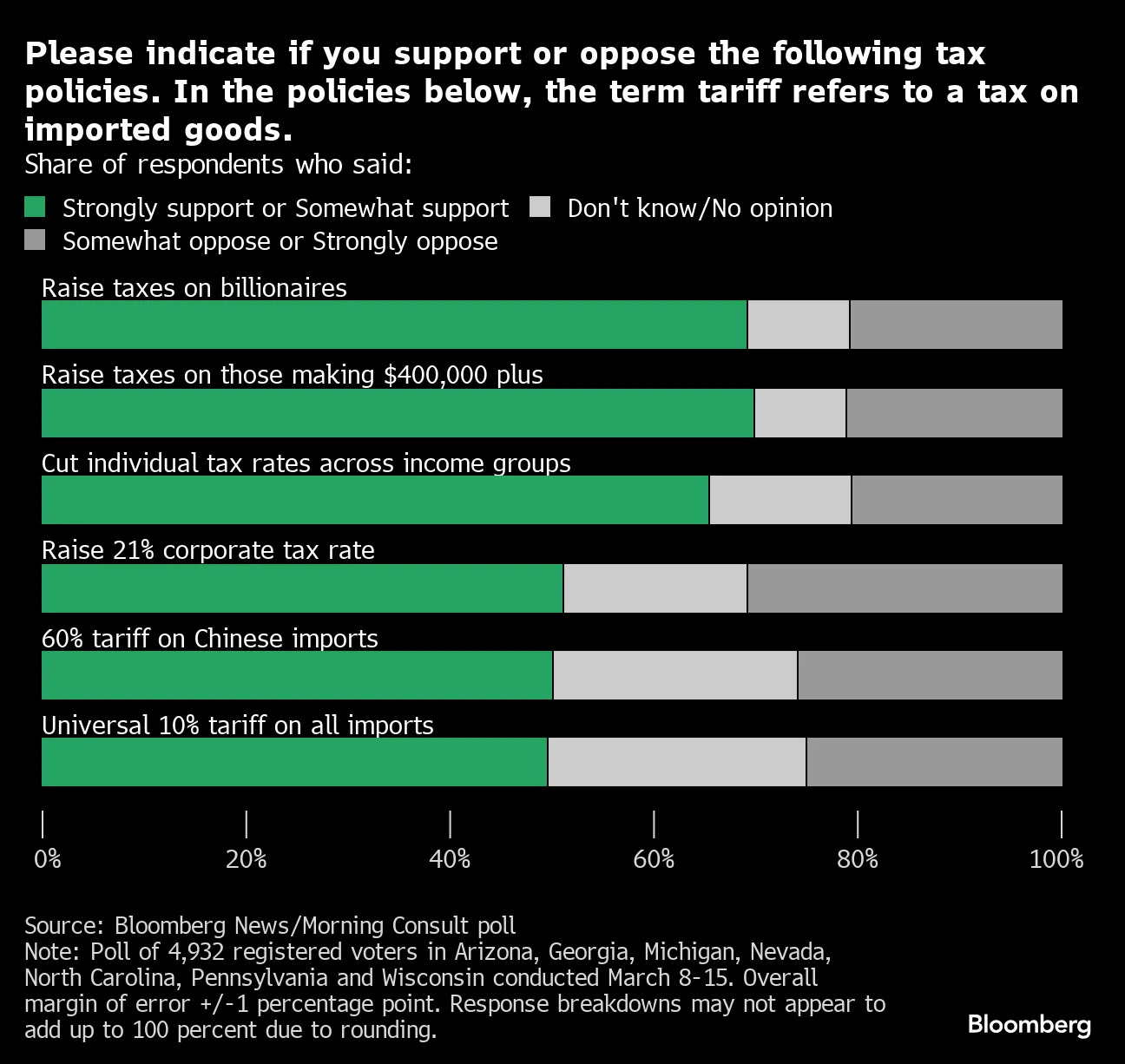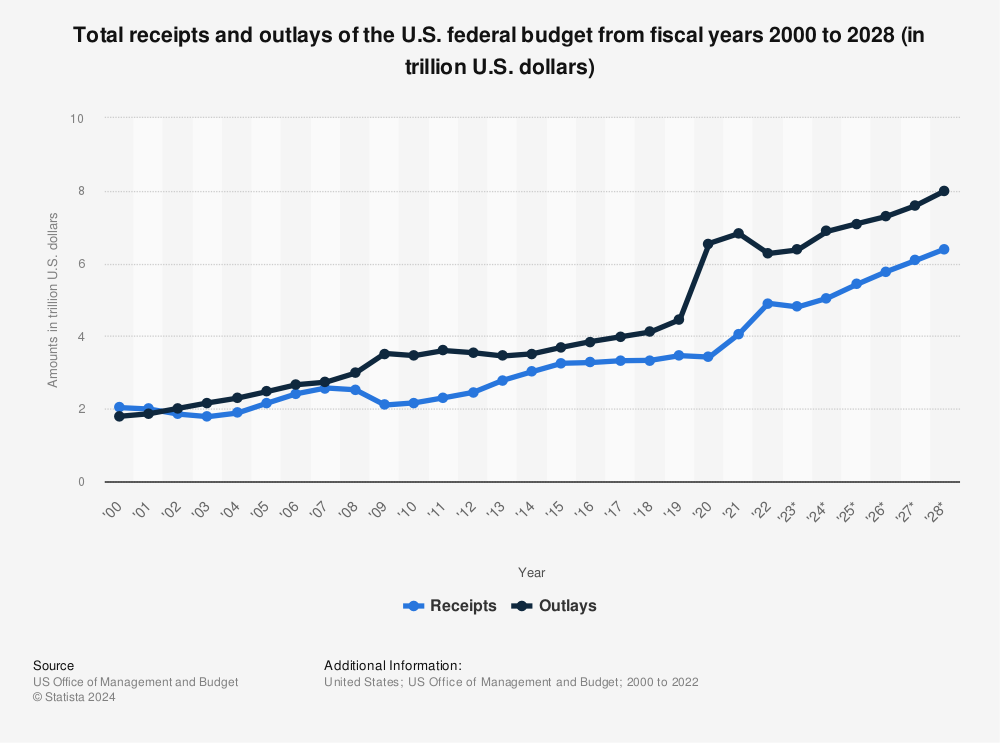“Well, I think we could do at least $2 trillion.” - Elon Musk on Trump Administration budget cutting plans

The United States lives beyond its means. Contrary to the usual axiom that the political parties care about budget deficits only when they are in the minority, Republicans intend to reduce the deficit through the power of their trifecta of the Presidency, House, and Senate, by cutting $2 trillion of the $6.8 trillion federal budget. This goal exceeds last year’s $1.8 trillion budget deficit. Somehow they hope to do this at the same time as cutting federal revenue by increasing tax breaks. They face two central challenges: the programs they would have to cut are popular and Americans may not be convinced that such cuts are necessary because most are already paying less in federal income taxes than historical averages.
Spending. America’s deficits are longstanding. We have accumulated a total federal debt in excess of $36 trillion, compared to a gross domestic product of $28 trillion. Last year, interest payments on the federal debt exceeded $1.1 trillion, exceeding spending for both defense and Medicare and trailing Social Security spending by only $300 billion. Put another way, debt service is the third-largest expense in the federal budget. We need to address the deficit before it consumes more of the services we rely on. However, those reductions will not be easy.
What has to be cut to reach the $2 trillion mark? The US could cut all spending on both Medicare and national defense and come up short. Republicans often point to so-called non-defense discretionary spending - such as education, commerce, transportation, environmental protection, and similar services - but those in total add up to only about $1 trillion per year. Vivek Ramaswamy recently implied that he would start by eliminating funding for the Veterans Health Administration, a policy opposed by large majorities of Americans, but, even if we did totally abandon our obligation to fund healthcare for veterans, it would account for only about 5% of that $2 trillion target.
What are the most likely targets for cuts? Aside from non-defense discretionary spending, Republicans most frequently talk about cutting spending on non-Medicare health and income security programs. In the former category, cuts to Medicaid and marketplace subsidies on the health insurance exchanges are almost a given, with the only real question being the amount to cut. In the latter category, expect reductions in federal support for unemployment insurance and programs that help low-income people, such as SNAP, TANF, the Earned Income Tax Credit, and Section 8 housing. These cuts will, in turn, affect state budgets and likely result in cuts in their budgets for education, especially higher education.

Revenue. Despite the widespread perception of high taxation, federal effective tax rates are near historic lows in the modern era. The average effective individual income tax rate fell from 11.1% in 1979 to 6.9% in 2020. The average effective corporate income tax rate fell from 3.4% to 1.4% over the same period. Average federal excise taxes - specific taxes on items like like fuel, airline tickets, heavy trucks and highway tractors, indoor tanning, tires, and tobacco - dropped from 1% to 0.5%. And, of course, the wealthy have benefited most. As an example, estate tax reductions resulted in an 85% reduction in amounts due to the federal government when a wealthy person passes.

The problem of the budget deficit will persist for decades and require attention from future administrations. Regardless of the Trump Administration’s preferences, tax increases will be required to avoid severe cuts to Social Security and Medicare, both of which face funding crises in the mid-2030’s. A 2% increase in payroll taxes would generate over $200 billion in additional revenue annually to shore up entitlement programs. Simply requiring Social Security taxes to be collected on income over $168,600 would net about $100 billion a year. Eliminating the stepped up basis and other estate tax dodges for the wealthy could generate about $150 billion annually. Reducing or eliminating the mortgage income deduction - which disproportionately benefits the wealthy and discourages other forms or retirement savings - could net about $85 billion. All of these would also benefit state revenues. More generally, simplifying the tax code to reduce its complexity could result in a fairer tax structure, more revenue, and even reduced tax rates in time.

No Free Lunch. We last had a balanced federal budget in 2001. The fault does not lie primarily with either party. The War on Terror, the Affordable Care Act, and COVID-19 pandemic spending were all put on the federal “credit card” without any plan about how to pay them back or even balance their ongoing costs. The Bush and Trump tax cuts further eroded revenue, worsening the problem. Since 2001, the federal debt has risen from just over $3 trillion to more than $36 trillion. Whether the answer lies in cuts, taxes, or both, the bill is coming due. Unless we address it, it will pose a greater risk to our future than any external threat. The fault lies not in our stars, but in ourselves.
Immigration - Looking at the Numbers
When teaching students to look at an issue, I encourage them to start with the numbers, rather than their preconceived notions. President Trump recently clarified that his “mass deportations” would focus on undocumented people with a presence in the US under 2 years, which he estimated at 2 million people. Annual deportations and removals peaked at about 1.3 million during the second Bush Administration, making his goal achievable.
Trump further said that he was interested in finding a path to residency for Dreamers - adults who came to the US as children. There are about 535,000 Dreamers who have applied for this, with another 1.5-2.5 million who might qualify if they applied. Taking him at his word, this leaves 7.5-8.5 million undocumented people who have likely stayed in the US longer than 2 years, but who did not come to the US as children.
While much attention has been focused on immigrants who claim asylum because of problems in their home countries, a plurality of immigrants come from Mexico. Mexican immigrants are unlikely to receive asylum, as their government is relatively stable and grant rates have recently run under 20%. (The only countries with asylum grant rates over 75% and more than 3,000 grants of asylum are China and Russia.) Indeed, less than 1% of Mexican immigrants even request asylum.
Readers will draw their own conclusions about the desirability of any particular approach to immigration enforcement, but it’s important that we at least agree on the scope of the issue.
Ukraine Is Not Afghanistan or Vietnam
I’ve read a distressing number of conservative commentators equate Ukraine to Afghanistan or Vietnam. In both of the latter, we supported governments that lost the support of their populations against domestic insurgencies, fighting with our own troops. In Ukraine*, we are supporting a government that enjoys the support of its people against a foreign invader with financial and intelligence support. While I am concerned that our financial support will cease under Trump, I’m more concerned that Putin-apologist Tulsi Gabbard, Trump’s nominee for Director of National Intelligence, will cease the intelligence cooperation that has allowed Ukraine to leverage it’s much smaller population against a much larger invading force. Having finally found the side of the angels in a conflict, let’s not abandon our highest principles in favor of supporting the ambitions of a dictator.
*An earlier version of this said “Afghanistan” when I meant Ukraine. Thanks to Ron for the correction. The main article gets better editing than the postscript notes.
Assad Is Out - Now What?
Many of us watched with joy as Syria’s dictator was deposed and fled to Russia. While that is a positive step, we’ve actually entered the period of most danger for the future of the country. Very different military forces, from Kurds to jihadis, now occupy different parts of the country. Having set aside their differences to kick out Assad, these groups will now have to sort out what form of government they want for the future. We should resist our usual inclination toward highly-centralized states and promote a small central government with most of the power devolved to autonomous regions. It’s better to allow Syrians to grow closer over time in peace than to force them into a vision of government that too-closely resembles the one they just deposed and promote conflict.
Keep Letters from a Recovering Politician Free
As always, the best thing you can do to support this column is to share it with people who might be interested. I do not have a paid plan because I want folks to be able to access it without worrying about money. If you’d like to leave me a tip to show your appreciation, you can click on the “Buy Me a Coffee” button below.









Thanks for the very thoughtful article, Marty.
'Taking him at his word"? I'm sorry, but I laughed out loud at this. You know Trump lies all the time, and changes his story from one day to the next. His minions, Steve Miller and Tom Homan, have spoken in much more aggressive terms than Trump. Homan said he will avoid family separation -- by deporting entire families including members who are American citizens.
In your paragraph about Ukraine, you wrote "In Afghanistan, we are supporting a government that enjoys the support of its people against a foreign invader with financial and intelligence support." I think you meant to say Ukraine.